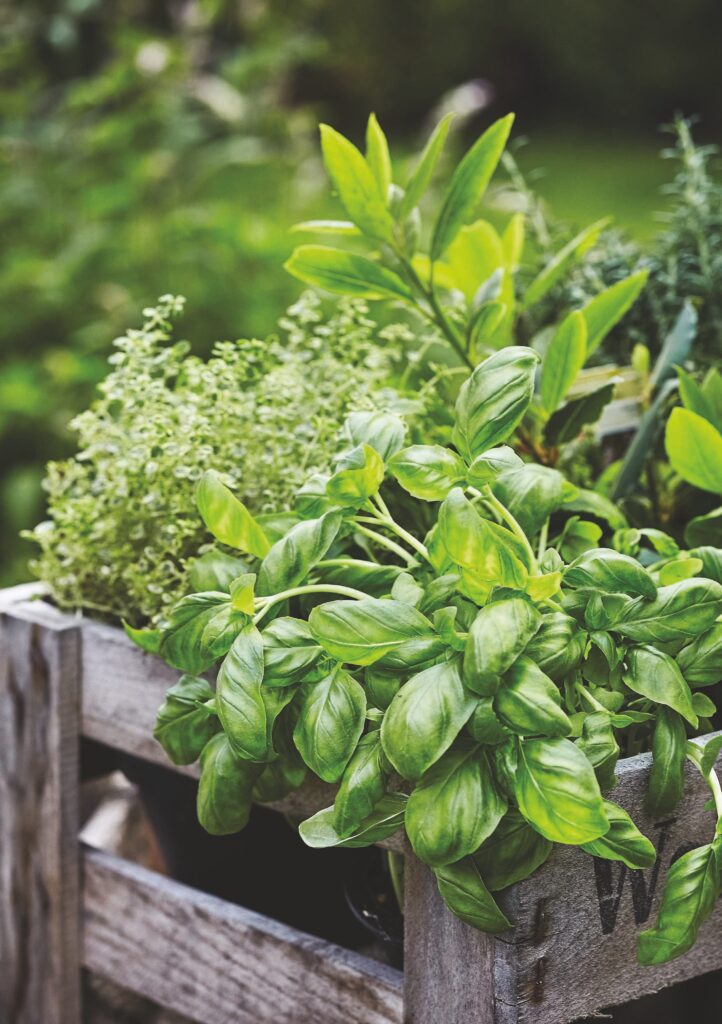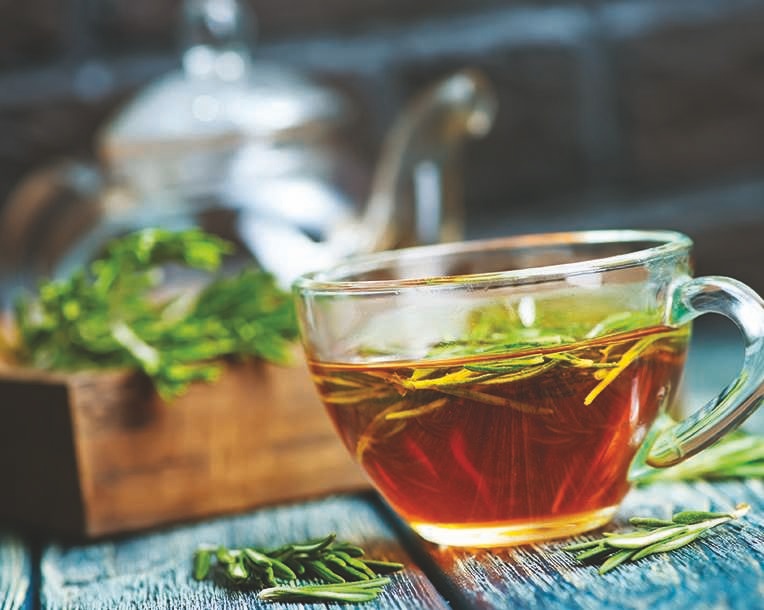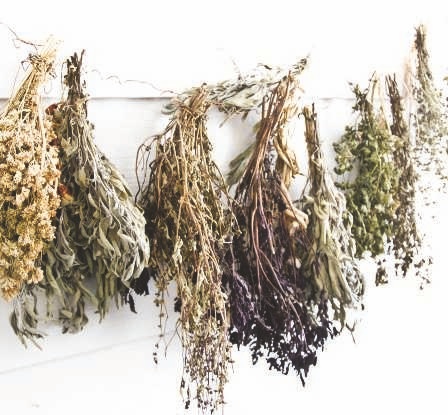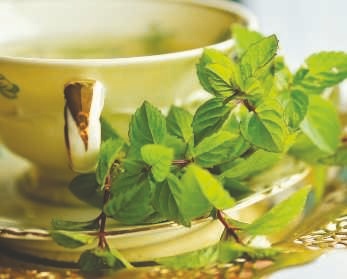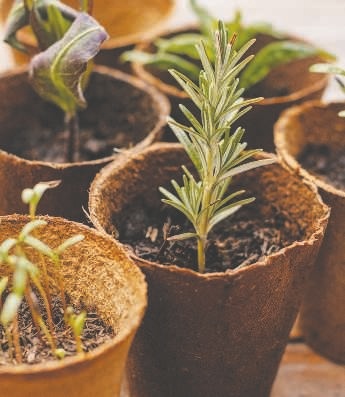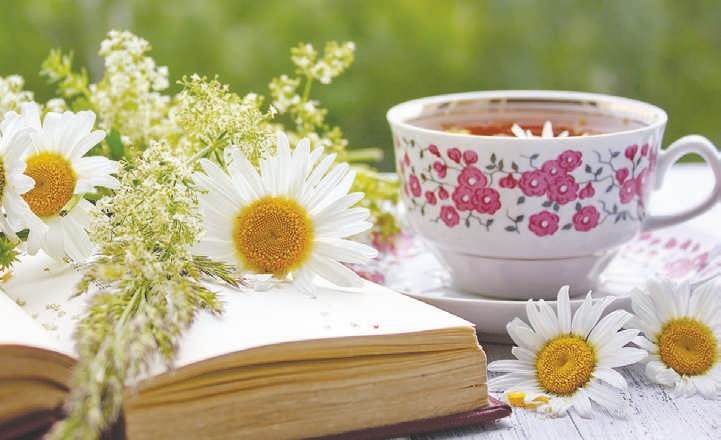Healing Gardens
Gardening is known to be hugely beneficial to our physical and mental wellbeing. It connects us to nature, gets us out in the fresh air and is often a welcome escape from daily stresses.
Words: Tina Marshall
A beautifully planted herbaceous border never fails to lift spirits, and many gardeners enjoy growing fruit and vegetables to nourish both body and soul. But it’s possible to tap even further into the healing power of plants by growing herbs and using them to create your own natural remedies.
For centuries, herbs have been used to treat a range of conditions and ailments, and many herbs still form the basis of some of the medications that you might buy from your chemist today. Aspirin, extracted from the bark of the willow tree, was first used to alleviate pain by the Ancient Egyptians, who chewed pieces of willow bark. Morphine was first extracted from the opium poppy in the early 19th century and was used for its pain-relieving properties. There are many simple ways to release the powerful healing properties of herbs, and by growing just a few varieties at home you can effectively create your own apothecary cabinet.
Pot-grown herbs are usually available from your local garden centre or nursery, and most varieties are easy to raise from seed. Herbs can be grown in beds and borders, raised beds, containers or even on a windowsill. They are low-maintenance plants, and thrive in a warm, sunny, sheltered spot in well-drained soil. Where possible, site them close to the kitchen so they can be harvested easily when needed. It is advisable to plant mint and lemon balm in their own separate containers rather than in a shared container or directly in a border, as both grow prolifically and can take over a plot at the expense of other plants. The only routine care required when growing herbs is to remove any weeds and water regularly.
Herbal Tea
One of the easiest ways to enjoy the many health benefits of herbs is to prepare a herbal tea, or tisane. These drinks are incredibly flavoursome, naturally caffeine-free, and may contain a range of vitamins, minerals and health-promoting antioxidants, depending on the herbs used. To prepare a tisane, pick a small handful of fresh herbs, rinse and scrunch the leaves slightly to release their essential oils. If using dried herbs, a teaspoon of dried leaves, seeds or flowerheads is enough for one mug. Steep the herbs in freshly boiled, slightly cooled water, ideally in a teapot as the lid prevents the powerful essential oils being lost through evaporation. Leave to infuse for five minutes, strain and pour. Take time to appreciate the delicate fragrance and aroma of the tea – breaking away from a busy day for just a few minutes gives you an opportunity to reflect and regroup and enjoy a moment of mindfulness.
Herbs contain an abundance of vitamins and minerals and can be used to calm, revive or energise both body and mind. They are packed with health-promoting antioxidants that fight the damaging free radicals found in our bodies, and they are believed to be hugely beneficial to our health in many other ways too.
Dried Herbs
Herbs can be dried to allow them to be stored for longer. Harvest the herbs, gently rinse and pat dry. Tie gently in a bunch and hang upside-down in a warm, well-ventilated spot out of direct sunlight. When the herbs appear dry and crispy, they are ready to be stored in an air-tight container and kept in a cool, dry, dark place. Dried herbs are usually three or four times stronger than fresh herbs, so when using them in a recipe adjust quantities accordingly.
Here are some of the most versatile and widely-used herbs, all of which are incredibly easy to grow at home and make delicious herbal teas:
Mint
Mint has been used for centuries to soothe an upset stomach and ease indigestion. It is also said to relieve congestion from a cold and can reduce feelings of nausea. Its invigorating menthol aroma is wonderfully uplifting, making it the perfect tonic if you need to feel energised.
Lemon verbena
Said to calm body and mind, lemon verbena makes a delicate, lemon-flavoured tea best enjoyed at bedtime. Its relaxing qualities are also said to soothe stomach cramps and menstrual pains.
Rosemary
Said to invigorate, energise and even improve concentration and memory, rosemary is also believed to aid digestion and relieve gas and bloating.
Lemon balm
Known for its relaxing, calming properties and used to treat anxiety and restlessness, it’s said to promote healthy and restful sleep. Can also be used to ease pain including headaches and menstrual cramps.
Fennel
Fennel is said to soothe digestive problems such as an upset stomach, bloating and trapped wind. It’s another one said to relieve menstrual cramps.
Sage
Said to provide comfort from hot flushes and night sweats, this may be beneficial for women going through the menopause.
Chamomile
Believed to promote restful sleep and ease anxiety, it can also be used to treat digestive issues such as cramps and indigestion.
With summer here and temperatures rising, why not get creative and make a cooling, herbal infusion to drink and enjoy? Add a handful of fresh herbs to a jug of water and flavour with slices of fruit, cucumber or edible flowers. Place the jug in the fridge and enjoy throughout the day. Mint leaves and cucumber slices added to chilled water make a wonderfully refreshing summer drink. For a delicate but fruity flavour, pair lemon verbena leaves with strawberries, while for an invigorating pick-me-up, try a chilled rosemary infusion dressed with lemon slices. It is important to remember that herbal teas should be introduced slowly into your diet to minimise the impact of any adverse side-effects.
If you suffer from a specific medical condition, be sure to seek medical advice before including herbal teas in your diet, and always speak to a medical professional about any specific health concerns. If you are pregnant, you should not drink herbal tea without your doctor’s consent.
Posted in: General
